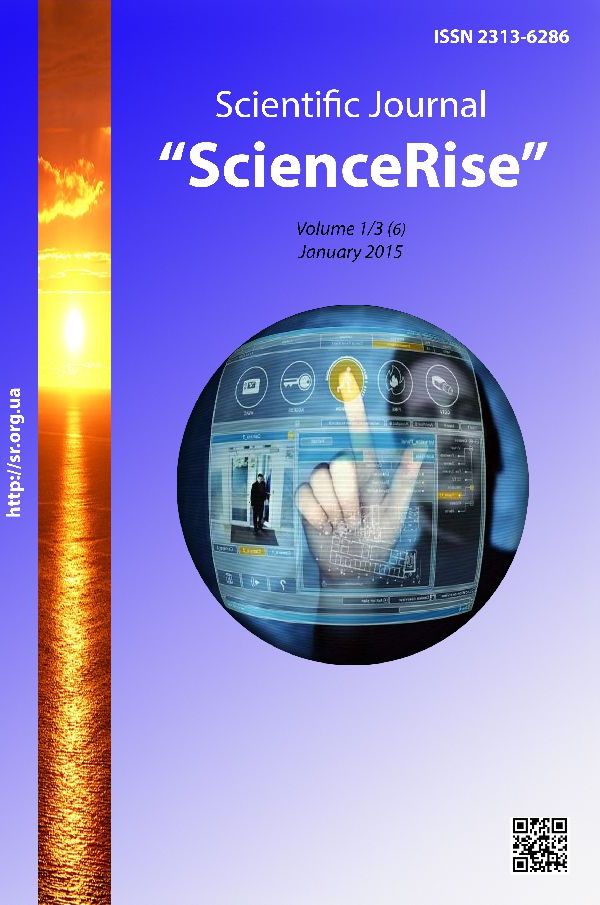Факторы прогноза при первичных миелодиспластических синдромах у лиц молодого и среднего возраста
DOI :
https://doi.org/10.15587/2313-8416.2015.36499Mots-clés :
миелодиспластические синдромы, прогноз, экспрессия CD95 и FLT3Résumé
Проведен анализ прогностической значимости клинико-лабораторных параметров при первичных миелодиспластических синдромах у лиц возрастной группы 18–60 лет. Установлено, что значения экспрессии CD95 клетками КМ ≤40 % и FLT3≥60 % можно рассматривать как прогностические маркеры прогрессирования первичных миелодиспластических синдромов и временной момент обязательного старта специфической терапии
Références
Kosmider, O., Gelsi-Boyer, V., Cheok, M. et al. (2009). TET2 mutation is an independent favorable prognostic factor in myelodysplastic syndromes. Blood, 114 (15), 3285–3291. doi: 10.1182/blood-2009-04-215814
Kjeldsen, L., Dybedal, I., Hellström-Lindberg, E. et al. (2010). Guidelines for the diagnosis and treatment of myelodysplastic syndromes and chronic myelomonocytic leukemia. Nordic MDS Group. MDS Guideline Programme, 5, 4th update, 43.
Malcovati, L., Porta, M. G., Pascutto, C. et al. (2005). Prognostic factors and life expectancy in myelodysplastic syndromes classified according to WHO criteria: a basis for clinical decision making. Journal of Clinical Oncology, 23 (30), 7594–7603. doi: 10.1200/jco.2005.01.7038
Malcovati, L., Germing, U., Kuendgen, A. et al. (2008). Time-Dependent Prognostic Scoring System for Predicting Survival and Leukemic Evolution in Myelodysplastic Syndromes. Journal of Clinical Oncology, 25 (23), 3503–3510 doi: 10.1200/jco.2006.08.5696
Weinberg, O. K., Seetharam, M., Ren, L. et al. (2009). Clinical characterization of acute myeloid leukemia with myelodysplasia-related changes as defined by the 2008 WHO classification system. Blood, 113 (9), 1906–1908. doi: 10.1182/blood-2008-10-182782
Cazzola, M. (2011). Risk assessment in myelodysplastic syndromes and myelodysplastic/myeloproliferative neoplasms. Haematology, 96 (3), 349–352. doi: 10.3324/haematol.2010.030023
Alessandrino, E. P., Della Porta, M. G., Bacigalupo, A. et al. (2008). WHO classification and WPSS predict posttransplantation outcome in patients with myelodysplastic syndrome: a study from the Gruppo Italiano Trapianto di Midollo Osseo (GITMO). Blood, 112 (3), 895–902. doi: 10.1182/blood-2008-03-143735
Greenberg, P., Cox, C., LeBeau, M. M. et al. (1997). International scoring system for evaluating prognosis in myelodysplastic syndromes. Blood, 89 (6), 2079–2088.
Greenberg, P. L., Tuechler, H., Schanz, J. et al. (2012). Revised International prognostic scoring system for myelodysplastic syndromes. Blood, 120 (12), 2454–2465. doi: 10.1182/blood-2012-03-420489
Therneau, T. (2014). A Package for Survival Analysis in S. R package version 2.37-7. Available at: http://CRAN.R-project.org/package=survival (Last accessed: 15-09-2014).
R: A language and environment for statistical computing. R Foundation for Statistical Computing/R Core Team (2013). Vienna, Austria. Available at: http://www.R-project.org/
Brunning, R. D., Orazi, A., Germing, U. et al.; Swerdlow, S. H., Campo, E., Harris, N. L. et al. (Eds.) (2008). Myelodysplastic syndromes/neoplasms, overview. In: WHO Classification of Tumours of Haematopoietic and Lymphoid Tissues. Lyon: IARC, 88–93.
Téléchargements
Publié-e
Numéro
Rubrique
Licence
(c) Tous droits réservés Наталья Николаевна Климкович, Ольга Владимировна Красько, Татьяна Ивановна Козарезова 2015

Cette œuvre est sous licence Creative Commons Attribution 4.0 International.
Our journal abides by the Creative Commons CC BY copyright rights and permissions for open access journals.
Authors, who are published in this journal, agree to the following conditions:
1. The authors reserve the right to authorship of the work and pass the first publication right of this work to the journal under the terms of a Creative Commons CC BY, which allows others to freely distribute the published research with the obligatory reference to the authors of the original work and the first publication of the work in this journal.
2. The authors have the right to conclude separate supplement agreements that relate to non-exclusive work distribution in the form in which it has been published by the journal (for example, to upload the work to the online storage of the journal or publish it as part of a monograph), provided that the reference to the first publication of the work in this journal is included.

